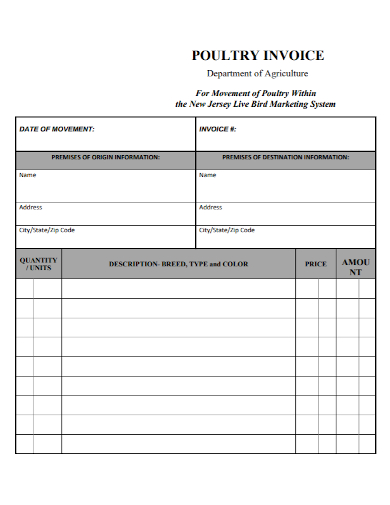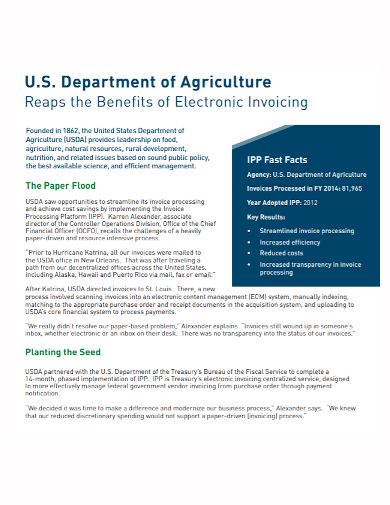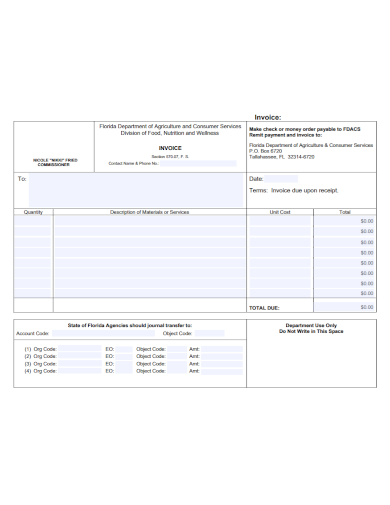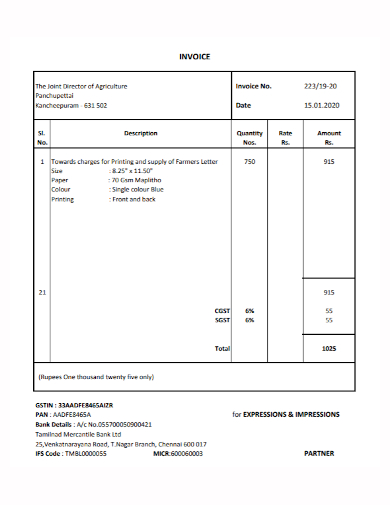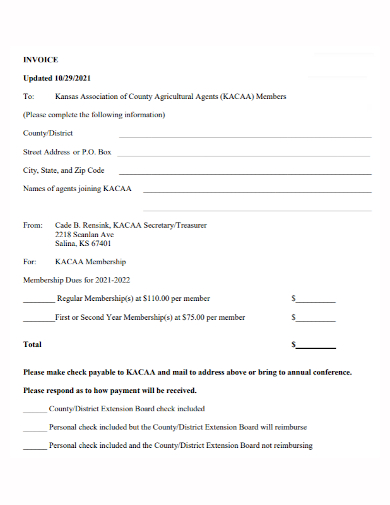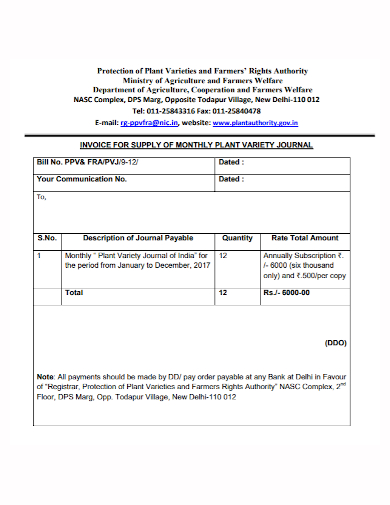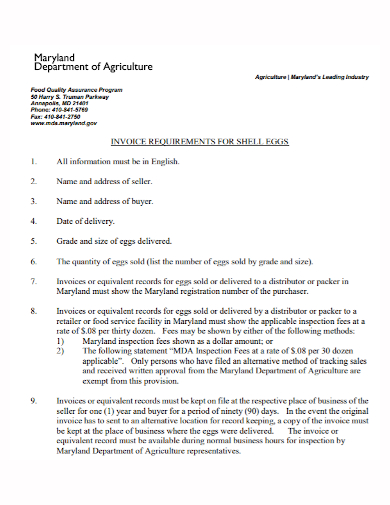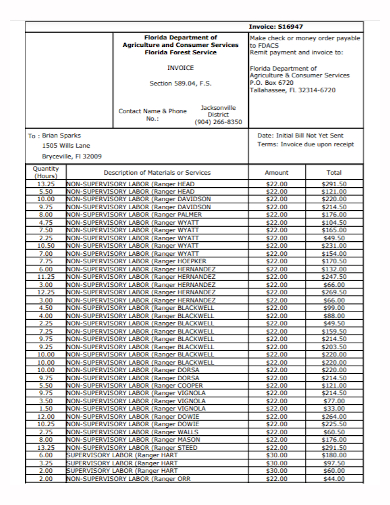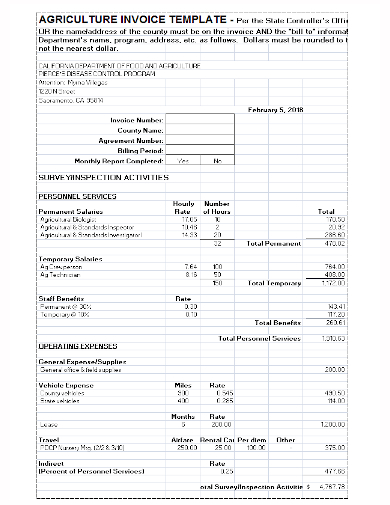An invoice is a bill sent by a business to its consumers or clients, requesting payment for goods or services. Invoices often include a description of the things you’re charging for, as well as payment terms. Businesses must preserve information about sales and income for tax and accounting purposes, thus invoices are a crucial aspect of bookkeeping. Receipts (which recognize payment) and purchase orders are not the same thing as invoices (which notify intent to buy goods and services).
9+ Agriculture Invoice Samples
There’s a strong possibility you qualify for agriculture receivable factoring if you’re a startup farmer, shipper, or distributor with unpaid client bills stacking up. When you don’t have the time or liquid assets to wait for your clients to pay you, small business factoring for the agriculture industry is a viable and practical choice for maintaining cash flow. Slow-paying customers can suffocate cash flow and working capital, as well as any future aspirations to expand your organization. Bank loans with high interest rates just add to your total debt, and applying for one can be challenging if you’re a new business or have a poor credit history.
1. Agriculture Invoice Template
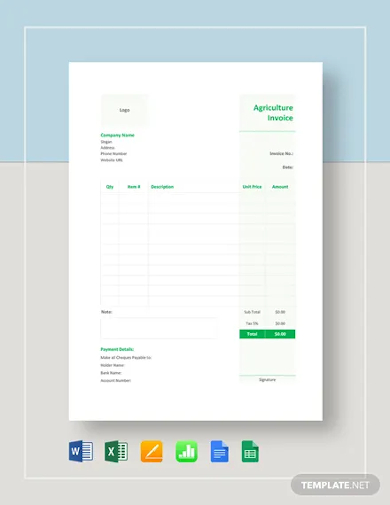
2. Agriculture Poultry Invoice
3. Agriculture Electronic Invoice
4. Agriculture Consumer Invoice
5. Director Agriculture Invoice
6. Agriculture Agents Invoice
7. Agriculture Monthly Invoice
8. Sample Agriculture Invoice
9. Agriculture Service Invoice
10. Printable Agriculture Invoice
Writing an Invoice
- Make sure your invoice looks professional – The first thing you should do is put together your invoice. You can do it yourself with a word processor or Excel, or you can use one of the free invoice templates we’ve provided above. Depending on the program you’re using, there might even be sample templates in your word processor. If feasible, add your logo and colors after using professional fonts and styling that matches your brand.
- Clearly mark your invoice – Make sure your consumers are aware that they are receiving an invoice. Simply putting the phrase invoice at the top of your document may increase your chances of getting paid on time, as it distinguishes your payment request from other documents your client may receive. A unique identification number is required on your invoice. This is for your records, as you should keep track of all the invoices you’ve sent so you don’t end up with duplicates. You can employ a number sequence that steadily rises in size. You might even put letters in front of a number to identify a specific customer.
- Add company name and information – This includes both your company’s data and the information about the company you’re billing: your company’s name, address, and contact details, your customer’s company name and address, including a contact’s name so it gets to the right person, and your registered business address and company registration number, as well as the formal registered name, if you’re a limited company.
- Write a description of the goods and services you’re charging for – These descriptions don’t have to be long, but they should include enough information for your customers to understand what they’re paying for. After all, if consumers don’t understand what they’re being charged for, they’re more likely to challenge the invoice, causing a payment delay. After you’ve given each item a detailed description, you should provide the quantity and pricing.
- Don’t forget the dates – On your invoice, you must include some dates. These are the dates on which you supplied your goods or services (the supply date) and when you created the invoice (the invoice date). You might include the supply date in the description of your goods or service, and include your name, address, and contact information at the top of the invoice.
- Mention payment terms – Although you should have agreed on payment conditions with the customer ahead of time, it’s a good idea to include them on the invoice as well. So, if you anticipate to be paid within a particular amount of time, include a reminder on the invoice. More importantly, make a mental note of how your buyer should pay. You’ll almost certainly want the customer to make the payment to a bank account. If that’s the case, make sure you provide your banking information. Clear payment conditions, as well as making it simple for clients to pay you, should benefit your company’s cash flow by encouraging prompt payment.
FAQs
What is agriculture factoring?
Agriculture factoring allows you to acquire a cash advance on your outstanding receivables so you can pay your employees, buy supplies, and keep your business running smoothly. It’s a form of short-term loan with a variety of conditions and eligibility criteria. Factoring does not require collateral, and most agribusiness firms are eligible because your clients’ credit is taken into account rather than your own. If you rely on cash flow to build your business or if you don’t qualify for a loan or line of credit, factoring can help.
Is invoice factoring important?
Agriculture businesses face unique hurdles compared to those in other industries. Unpredictable downtimes and yields, government laws, equipment maintenance, and fluctuating pricing can all have an impact on farming and produce large swings in income. That’s why it’s critical to develop ways to keep cash flowing and keep growth going.
If you want to see more samples and formats, check out some agriculture invoice samples and templates provided in the article for your reference.
Related Posts
FREE 10+ Sample Invoice for Consulting Services in PDF
FREE 3+ Cake Invoice Samples [Wedding, Birthday, Order]
FREE 10+ Payment Invoice Samples in MS Word | MS Excel | Google Docs | Google Sheets | PDF
FREE 10+ Work Invoice Samples in MS Word | Google Docs | Google Sheets | MS Excel | PDF
FREE 10+ Professional Invoice Samples in MS Word | Google Docs | Google Sheets | MS Excel | PDF
FREE 10+ Cleaning Invoice Samples in MS Word | Google Docs | Google Sheets | MS Excel | PDF
FREE 6+ Massage Invoice Samples in MS Word | MS Excel | Google Docs | Google Sheets | PDF
FREE 10+ Work Order Invoice Samples in MS Word | MS Excel | Google Docs | Google Sheets | PDF
FREE 5+ Legal Service Invoice Samples in MS Word | MS Excel | Google Docs | Google Sheets | PDF
FREE 10+ Hourly Invoice Samples in PDF | MS Word | Google Docs | Google Sheets | Excel
FREE 5+ Architecture Invoice Samples in MS Word | MS Excel | Google Docs | Google Sheets | PDF
FREE 10+ Customer Invoice Samples in MS Word | MS Excel | Google Docs | Google Sheets | PDF
FREE 14+ Construction Invoice Templates in MS Word | PDF
FREE 10+ Delivery Invoice Samples in MS Word | MS Excel | Pages | Numbers | Google Docs | Google Sheets | PDF
FREE 10+ Electrical Invoice Samples in MS Word | Pages | Google Docs | Google Sheets | Numbers | MS Excel | PDF

